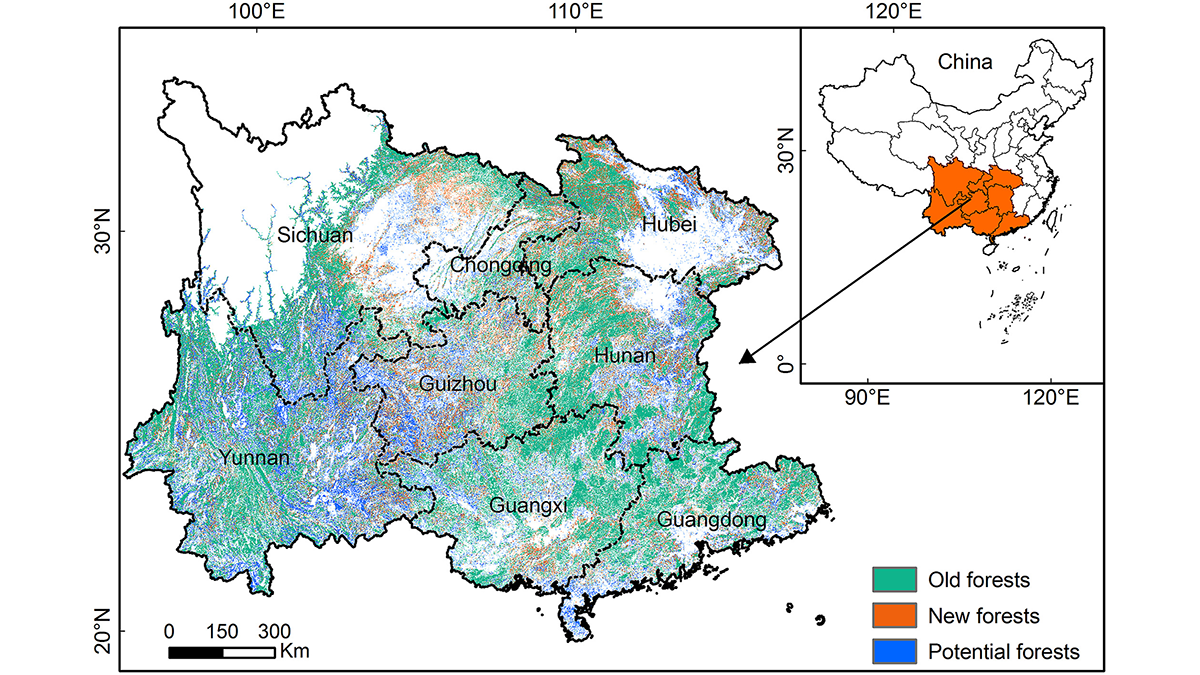Editors’ Highlights are summaries of recent papers by AGU’s journal editors.
Source: Earth’s Future
A translation of this article was made by Wiley. 本文由Wiley提供翻译稿。
Large-scale forest planting projects have been proposed as a carbon sequestration strategy for mitigating anthropogenic climate change. In southern China, tree-planting initiatives over recent decades have significantly expanded forested areas and sequestered substantial amounts of carbon in tree biomass. Understanding both the historical carbon sequestration and the potential for future carbon storage through forestation is important for developing climate change mitigation strategies.
Zhang et al. [2022] use a combination of data synthesis, remote sensing, and machine learning approaches to estimate the historical trajectory and the potential carbon storage capacity of forests in southern China. They find that regional forest carbon storage has increased over the 15-year study period, signifying successful carbon sequestration, and they identify opportunities for further increasing carbon density in forestation projects. However, they also find that forests in the region have already achieved more than 73% of their carbon storage capacity, indicating that afforestation alone will ultimately face limits as a carbon sequestration strategy.
Citation: Zhang, X. M., Brandt, M., Yue, Y. M., Tong, X. W., Wang, K. L., & Fensholt, R. (2022). The carbon sink potential of southern China after two decades of afforestation. Earth’s Future, 10, e2022EF002674. https://doi.org/10.1029/2022EF002674
—Benjamin Sulman, Associate Editor, Earth’s Future


